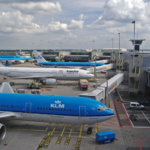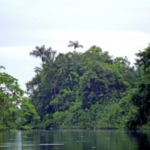About Anna
Anna Berti Suman is a Marie Skłodowska-Curie and former Dutch Research Council post-doctoral fellow at the European Commission Joint Research Centre. She is principal researcher of the project "SensJus" aimed at researching the potential of civic monitoring of environmental issues as a source of evidence for environmental litigation and as a tool to foster environmental mediation. The project combines desk research with ethnography, and aims at bringing this topic closer to interested communities, using experimental communicative methods including graphic novels and story-telling.
Cittadini Sentinella: Percepire Catastrofi tra Covid-19 e Cambiamento Climatico
by
Marie Petersmann and Anna Berti Suman
L’Altro Diritto
Abstract
by
Marie Petersmann and Anna Berti Suman
Abstract
In this contribution, we explore how the turn to sensing can enable a distinctive mode of engagement with ongoing socio-ecological disasters like the coronavirus pandemic and climate change. In line with Fleur Johns, sensing, in this context, refers to the work of eliciting, receiving, and processing impressions and information, both in the mode of intuitions or feelings, and in terms of data. Our essay starts by elaborating on the potential of sensing as a way to cope with unfolding events that qualify as ‘hyperobjects’. We see the turn to sensing as providing a productive means to engage differently with events that are massively distributed in time and space, and which manifestations call for a different configuration of existence. In doing so, we attempt to show how sensing can participate in Donna Haraway’s invitation to build more livable futures by 'staying with the trouble' that dwelling in a damaged Earth implies for human and more-than-human life forms. We then delve into situated examples of ‘citizen sensing’ initiatives and conclude by questioning how the insights drawn from such ‘sensing practices’ can be fruitful to cope and act upon risks associated with pandemics and climate change
Cite
Petersmann, M-C. and Berti Suman, A., ‘Cittadini Sentinella: Percepire Catastrofi tra Covid-19 e Cambiamento Climatico’ (2020) 4 L’Altro Diritto 39-56
Read on: Pacinieditori.it
Citizen Sensing and Ontopolitics in the Anthropocene: Engaging with Covid-19 and Climate Change
by
Marie Petersmann and Anna Berti Suman
COVID-19 from the Margins: Pandemic Invisibilities, Policies and Resistance in the Datafied Society
Abstract
by
Marie Petersmann and Anna Berti Suman
Abstract
Over the past weeks, a plethora of articles explored the relations2 between the COVID-19 crisis and the climate catastrophe by framing the former as an opportunity to learn lessons for tackling the latter.3 Among the articles was an essay by Bruno Latour, inviting us to address the current pandemic as a “dress rehearsal” that incites us to prepare for climate change.4 Elsewhere, Latour argued that the pandemic had “actually proven that it is pos- sible, in a few weeks, to put an economic system on hold everywhere in the world and at the same time, a system that we were told it was impossible to slow down or redirect.”5 Yet, despite the fact that both events constitute globally shared “collective” experiences, immediate societal responses to them vary greatly. While both events have their causes and effects entwined, their different spatio-temporal scales and socio-ecological impli- cations make socio-political responses to them difficult to compare. Of course, this is not to say that links between the two events do not exist. The outbreak of the zoonotic6 COVID-19 is entangled with multiple7 and often interacting “threats to ecosystems and wildlife, including habitat loss, illegal trade, pollution, invasive species and, increasingly, climate change.”8
Cite
Petersmann, M-C. and Berti Suman, A., ‘Citizen Sensing and Ontopolitics in the Anthropocene: Engaging with Covid-19 and Climate Change’ in Stefania Milan, Emiliano Treré and Silvia Masiero (eds), COVID-19 from the Margins: Pandemic Invisibilities, Policies and Resistance in the Datafied Society (Institute of Network Cultures 2021), 225-240
Read on: Tilburg University Research Portal



